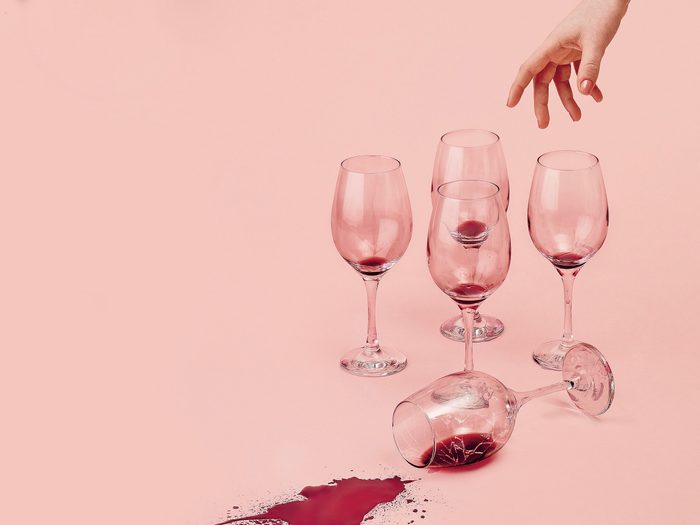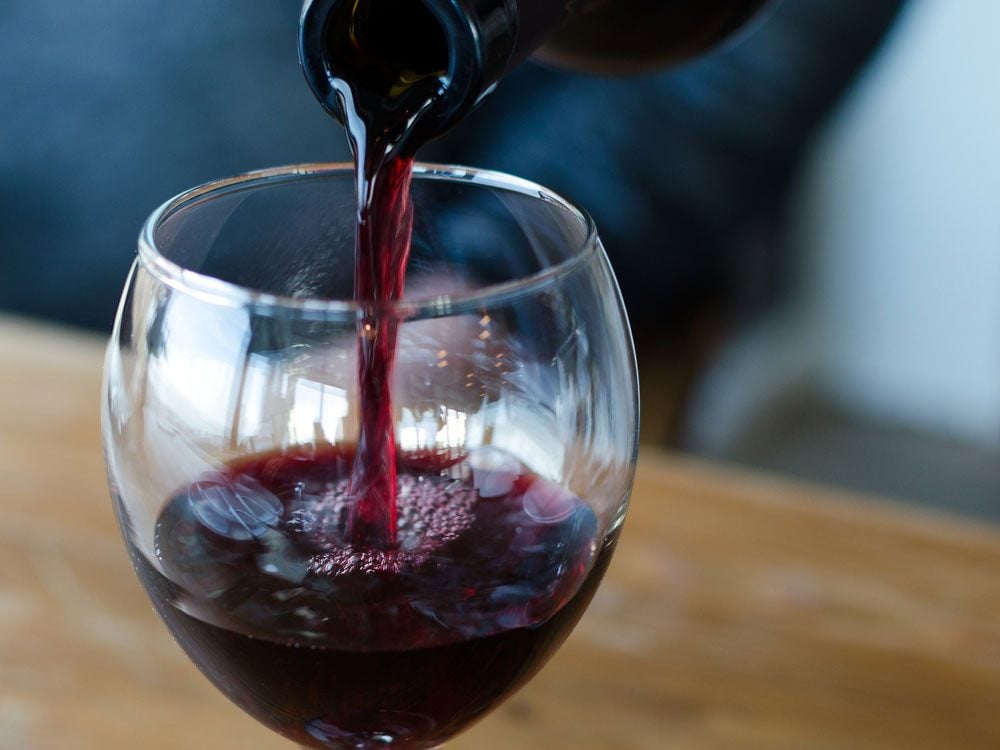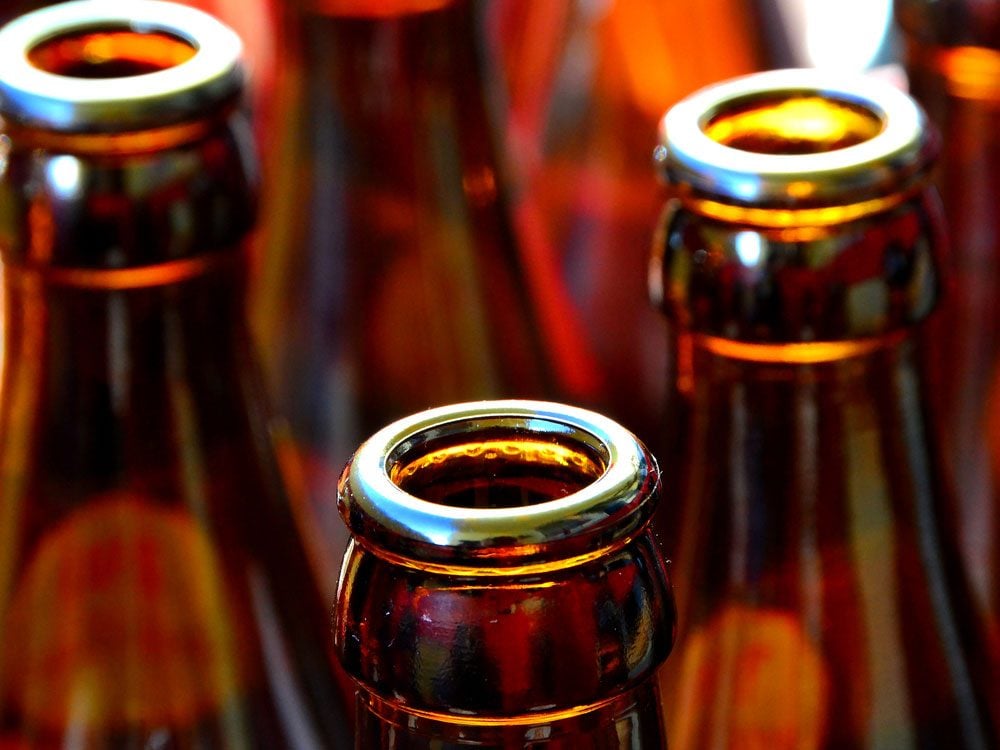
Binge drinking is “One of the biggest health problems we have in this country…”
In the 1970s, Jackie Rai was a young mother with a serious drinking problem. She was 23 years old and had a physically taxing job working on the assembly line of a seat belt manufacturing plant in Angus, Ontario. She came from an East Coast family and had always drunk heavily—by her own account, she’d been a binge drinker since age 18.
Every weekend started the same way. She’d drop her son off at her mother-in-law’s house and drive to the liquor store to get a bottle of rye and a case of beer. The weekends passed in a fog. She would arrive, hungover and weary, on her mother-in-law’s doorstep to pick up her son on Monday nights.
After nearly a decade of binge drinking, Rai quit cold turkey in 1979. But she’s been paying the health costs for nearly four decades. She suffered from anxiety and depression into her 40s. And, like many people who drink dangerously, Rai developed type 2 diabetes, which the 67-year-old will live with for the rest of her life.
According to global health guidelines, to qualify as a binge drinker, a man has to imbibe five or more drinks over a couple of hours and a woman four or more. If that sounds high, consider that two pints of beer put a female drinker just under that threshold.
And though the perception has long been that binge drinking is a pattern raucous twentysomethings develop before they grow out of it, research shows that this is not the case. According to Statistics Canada data from 2016, nearly six million Canadians are binge drinking at least once a month. The largest percentage of these people are within the ages of 18 and 34 (34 per cent of male heavy drinkers and 23 per cent of females), but 27 per cent of men who report binge drinking are 35 to 49 and 13 per cent of women who report are 50 to 64.
While binge drinking and alcoholism can overlap, the two are not the same. Binge drinking is defined as a period when, at least once a month, someone’s blood-alcohol level reaches .08 per cent. And while excessive drinking can lead to addiction, alcoholism is a medical condition with a physical dependence on the substance and without a set number of drinks.
“Excessive drinking is one of the biggest health problems we have in this country,” says Jürgen Rehm, the senior director for the Institute for Mental Health Policy Research at Toronto’s Centre for Addiction and Mental Health (CAMH). “If you want to die prematurely, continue binge drinking.”

Why there’s an uptick in binge drinking
Rates of binge drinking are rising so steadily in the United States that the authors of a comprehensive 2017 study called it a public-health crisis. Around the world, women are binge drinking more, and more heavily. One study, published last year in Alcoholism, found that binge drinking among U.S. women over 60 is increasing by 3.7 per cent every year. Another found that the number of Canadian women who identified as binge drinkers doubled from 1996 to 2013. In Canada, affluent white people are imbibing in greater quantities, as are people living in rural areas.
Multiple factors contribute to the increase in binge drinking. Some doctors cite the stresses that come with a dismal economic and political climate, a culture of overwork, a rise in mental health issues and growing social isolation. And drinking is arguably the world’s most socially acceptable vice—a customary indulgence at big celebrations, restaurant dinners or just a regular night at home.
As drinking becomes not only a way to make merry but a way to cope with stress, it has been increasingly linked to parenthood. Terms like “grown-up grape juice,” “mommy drinking” and “using wine to cope with the whine” glibly offer parents permission to soothe the burn of sleep deprivation and anxiety with alcohol.
While those factors may explain an uptick in the number of people reaching for that first drink, it’s brain circuitry that’s likely responsible for bingeing behaviours. A drink puts stress on cells in the brain’s extended amygdala, and those cells release a stress hormone called corticotropin, which fires up the brain’s ventral-tegmental-area neurons.
In other words, the brain’s reward centre lights up and relays to its owner that taking another drink is a great idea because the more you consume, the greater the reward. And because alcohol overstimulates certain parts of the brain, you’re not as likely to consider its impact or to focus on anything other than the immediate task at hand: drinking. Your brain circuitry encourages you to crack another beer, even if a sober you would know that it’s time to stop.
Read the heart-wrenching story of how one man helped his father get sober again.

The real cost of binge drinking
At its peak, James Wilt’s drinking cost him $300 a month. He’d make the trek to the liquor store to buy a high-percentage beer, a fancy bottle of bourbon or a plastic mickey of cheap sherry. “It was disgustingly sweet, but it got me drunk,” he says.
As a freelance writer, he worked and drank alone in his Winnipeg apartment. It took five years for him to realize he’d developed unhealthy drinking patterns. “I’d do the whole routine, saying I’m more creative and I write better when I drink,” he says.
On hungover mornings, it would take him hours to get out of bed just to perform basic functions. There were gaps in his short-term memory that weren’t there before. He’d spend hours working out every week and couldn’t seem to lose the extra weight his body had packed on.
He knew heart disease ran in his family and that the amount he was drinking would likely increase his risk. But it wasn’t until he quit, cold turkey, at age 26 that he learned about some of alcohol’s other dangers.
Let’s return to the brain. Alcohol and depression are inexorably linked, with some clinicians estimating that between 30 and 50 per cent of people with an alcohol dependence are also suffering from clinical depression. A study of the French population published in 2018 revealed that alcohol use is the biggest—and most preventable—risk factor for dementia.
Next, there’s the heart. One study, published in 2017 by a doctor at the University of California, San Francisco, found that ongoing alcohol abuse left its participants 40 per cent more likely to suffer a heart attack. (And that’s after accounting for established risks such as diabetes, obesity and smoking.) Heavy drinkers are more likely to have strokes, and to have them at younger ages than lighter drinkers. Harmful drinking habits accounted for 77,000 Canadians’ hospital admissions from 2015 to 2016.
On to the liver, where links between alcohol and hepatitis, liver cancer and cirrhosis (scarring of the liver) are well-established. If you’re finding your beer belly particularly persistent, note that studies have shown that heavy drinking contributes directly to weight gain and obesity, regardless of what kind of drinks you’re swilling. And doctors have linked heavy drinking to a slew of other cancers, including breast, colon, neck, larynx and esophageal. In 2012, researchers estimated that 3.3 million deaths worldwide were caused by alcohol consumption.
If that’s not enough to scare a drinker into teetotalling, consider this: a recent study by the University of Cambridge that examined the health of 600,000 drinkers found that people who consume more than one drink a day are more likely than those who drink less to die of any cause at all.
In gambling, your chances of winning go up the more frequently you buy in. The same is true of binge drinking’s health consequences. “Binge drinking—or how you drink—is at least as destructive as the overall quantity of drinking,” Rehm says, meaning that binge drinking six cocktails in one night is worse for your health than drinking one cocktail a night over six days. And drinking heavily over time, whether you binge or not, can reduce your lifespan by up to 25 years. “Heavy drinking is more likely to kill us than traffic, skiing or anything else,” he says.
Here are the silent signs of stress you might be ignoring.

Recovery is possible—here’s how to get help with binge drinking
And yet, somehow, we tolerate it anyway. Problem drinking can be hard to spot and even harder to address if you’re concerned about a loved one. When former attorney general Michael Bryant was in the throes of his alcoholism, after years of binge-drinking behaviour, a political colleague approached him one day to tell him, gently, that he thought Bryant may be drinking too much.
“He was right, and it was hard for him to say, and I was furious,” says Bryant, who is now 52 and has been sober for 12 years. “The denial and anger that rose up in me were severe.”
For Bryant, that intervention, along with a family doctor who asked him to journal his drinking, helped him realize he had a problem and commit himself to a 12-step program. “Most people are cucumbers, but I’m a pickle. And once you become a pickle, you can’t go back,” Bryant says. But research indicates that doctors still can’t clearly pinpoint which treatment options will work for which pickles.
In 2005, researchers at the University of Miami Miller School of Medicine conducted what is still the largest alcohol-treatment study in the world, assessing patients in facilities across the U.S. over a span of eight years. The results were disappointing. Three different treatment options—cognitive behavioural therapy, a 12-step program and motivational enhancement therapy—produced nearly identical success rates, and each was determined to be fairly ineffective. Alcoholics Anonymous optimistically pegs their success rate at 50 per cent, with other peer-reviewed studies estimating the program’s success sitting between five and 10 per cent. For others, there’s rehab, talk therapy, abstinence or a mix of other treatments to help the 17 per cent of Canadians drinking so much that they’re endangering their long-term health.
Over the last 50 years, alcohol has escaped the legislative pushes that have cracked down on other vices, like cocaine and LSD. This is, in part, due to the effectiveness of a powerful lobby financed by annual alcohol sales of over $20 billion in this country alone. In 2017, a Health Canada pilot project that would have seen large warning labels affixed to liquor bottles—similar to public service announcements on packs of cigarettes—in the Yukon was called off after alcohol lobbyists threatened legal action against the government for defamation and damages.
But other countries are ready to carry out meaningful changes. In France, health minister Agnès Buzyn ignited a national debate over the country’s insatiable thirst for wine. “The real message we should be sending today is that alcohol is bad for your health,” she told a French TV station in 2018. A number of the country’s doctors have rallied around her call for tougher regulations, prompting an outcry from the country’s robust wine industry. In 2018, the government of Lithuania, which was until recently the heaviest-drinking country in the world (since replaced by the Republic of Moldova), introduced a ban on alcohol ads across domestic and foreign media. It also raised the drinking age from 18 to 20 and increased taxes on alcohol in an effort to curb consumption.
Back at CAMH, Rehm says he’d like to see an increase in Canadian alcohol taxes, higher minimum prices and an abolition of alcohol marketing. By the time someone reaches age 16, he says, they’ve already seen about 15,000 alcohol ads.
In the meantime, ongoing research at CAMH shows that there’s one simple change that could help Canadians curb their drinking: screening during appointments with their family doctor. Evidence from organizations such as the WHO has shown that family doctors can effectively raise awareness of dangerous drinking simply by asking about their patients’ drinking habits and expressing concern for consumption exceeding standard low-risk guidelines. Findings from screening and intervention services in the U.S. have shown that adults who had these kinds of conversations with their doctors experienced a 12 per cent reduction in binge-drinking episodes and were 11 per cent more likely to keep to the consumption guidelines.
For now, screening is recommended by Canada’s National Alcohol Strategy but is rarely enforced. “Most family doctors don’t like to talk about alcohol,” Rehm says. “We’re trying to show how many lives we would save if they would.”
Jackie Rai has lived much of her adult life completely sober, but she doesn’t dismiss binge drinking as youthful folly. She now works as the executive director of the Vesta Recovery Program in Ottawa, a treatment facility that supports women suffering from addiction. The prevalence and acceptance of alcohol abuse still surprises her. “For years, I used to go home to New Brunswick for visits and I’d take an empty beer bottle and fill it up with water. My family could not understand how anybody could go to a party and not have a beer,” she says. “I think I was very blessed,” she says of her recovery. “In AA, I watched people laughing and having a good time without drinking. I believed it was possible.”
Next, learn how to spot the six warning signs of binge drinking.